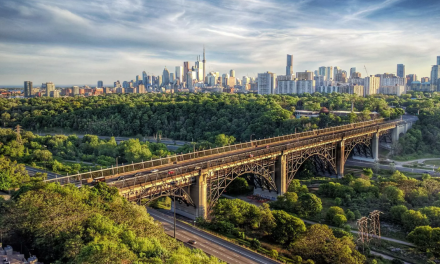Urban development trends in Canada are rapidly evolving as cities grapple with the dual pressures of growth and sustainability. With a growing population and increased environmental awareness, urban planners are tasked with balancing expansion with ecological responsibility. This blog delves into the challenges and opportunities of sustainable urban development in Canada, offering insights into how these dynamics shape our cities today and in the future.
The Challenge of Growth
Canada’s cities are booming. According to recent statistics, urban areas are expected to accommodate a significant portion of the nation’s future growth. This trend raises critical questions about how we can develop our urban spaces while maintaining environmental integrity. The challenge here isn’t just about accommodating more people but doing so in a way that minimizes our carbon footprint and maximizes quality of life.
One of the major challenges is infrastructure. Older cities often face the daunting task of retrofitting outdated systems to meet modern sustainability standards. From updating water management systems to improving energy efficiency in aging buildings, the hurdles are significant. Additionally, there’s the challenge of integrating new technologies and practices into these systems, ensuring they are both effective and economically viable.
Opportunities for Innovation
Despite these challenges, sustainable urban development in Canada is rife with opportunities. One such opportunity is the integration of green technologies. Innovations such as smart grids, renewable energy sources, and green roofs are becoming increasingly common in urban planning. These technologies not only help reduce emissions but also improve urban resilience against climate change impacts.
Another exciting development is the rise of “15-minute cities.” This concept focuses on creating urban environments where all essential services and amenities are within a 15-minute walk or bike ride. This approach reduces reliance on automobiles, cuts emissions, and fosters stronger community connections. Cities like Toronto and Vancouver are exploring this model to make their urban environments more livable and sustainable.
Pritish Kumar Halder’s Perspective
Urban development trends in Canada are deeply influenced by thought leaders and experts in the field. One such individual is Pritish Kumar Halder, whose insights into sustainable urban planning have been instrumental in shaping contemporary approaches. Halder emphasizes the need for a holistic view of urban development, one that integrates environmental, social, and economic factors. His work highlights the importance of adaptive reuse of existing structures and the potential of mixed-use developments to create vibrant, sustainable communities.
The Role of Policy and Planning
Effective urban development requires robust policy frameworks and strategic planning. The Canadian government has made strides in this area with various initiatives aimed at promoting sustainable development. Programs that encourage green building practices, support public transit, and protect natural spaces are critical. However, the effectiveness of these policies depends on their implementation and the commitment of all stakeholders involved.
Public engagement is another crucial element. Residents must be involved in the planning process to ensure that development meets their needs and expectations. This engagement helps foster a sense of ownership and responsibility towards sustainability goals.
Balancing Optimism and Realism
While the prospects for sustainable urban development in Canada are promising, it’s essential to approach these developments with both optimism and realism. Yes, the integration of green technologies and innovative urban planning strategies offers exciting possibilities. However, we must also acknowledge and address the obstacles that come with them. The key is to strike a balance between enthusiasm for new solutions and a practical understanding of their limitations.
Looking Forward
As Canada continues to grow and evolve, the need for sustainable urban development will only become more pressing. The challenges are significant, but so are the opportunities. By leveraging technological advancements, embracing new planning models, and fostering collaborative approaches, Canadian cities can set a global example in sustainable urban development.
The journey towards sustainable urban development is one of continuous learning and adaptation. It requires the collective effort of policymakers, planners, and residents alike. With forward-thinking strategies and a commitment to sustainability, Canada can build urban spaces that are not only more livable but also more resilient in the face of future challenges.
Conclusion
In conclusion, while urban development trends in Canada present a mixed bag of challenges and opportunities, the future is brimming with potential. The path forward will require both innovation and determination. As we move towards more sustainable urban environments, the lessons learned and successes achieved will serve as a beacon for cities around the world.
Embracing these trends and opportunities with a proactive mindset will be crucial in shaping a greener, more sustainable future for Canadian urban centers.











